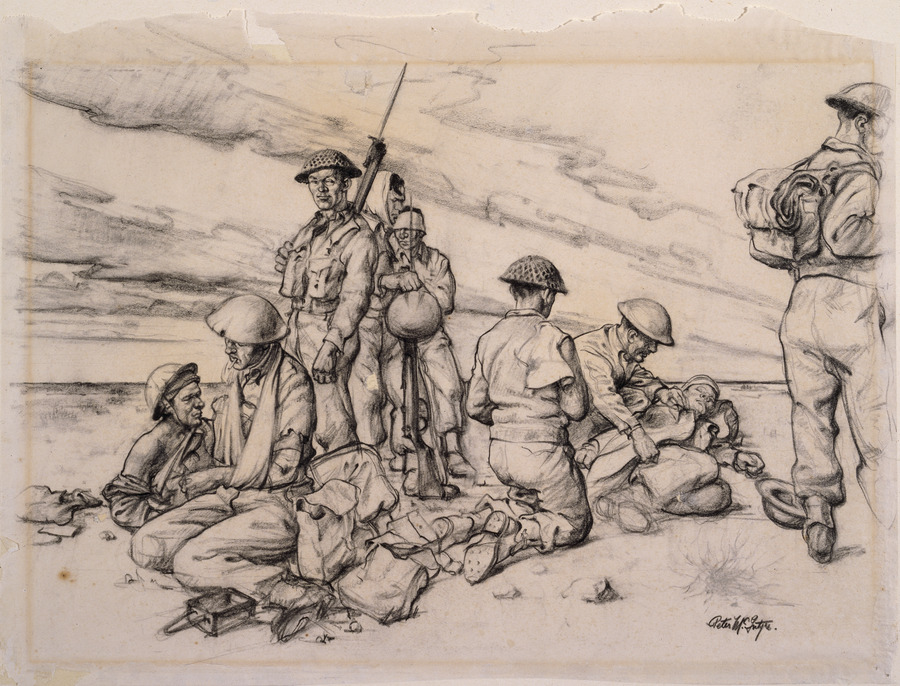In a recent post at this link, I have provided a short snippet from a document issued by the Commander Royal Artillery (C.R.A.) of 1 Armoured Division on 20 January 1942. 1 Armoured Division had not been in action at that time, although some of its subunits had been, and it would probably have relied primarily on the experience of other formations during the CRUSADER battles that started on 17 November 1941.
The problem with the document is that while it may have given correct instructions for dealing with German tanks without face-hardened armour, it was pretty far off the mark when it came to the new versions that had arrived to replace the almost total loss suffered by the Germans in the CRUSADER battle. Of the about 90 tanks that the Germans took into battle in the counteroffensive the day this memo was sent out, over 70 would have been recent deliveries, and most if not all of them would have been equipped with the superior armour that made them impervious (over the frontal arc) against the 2-pdr gun.
[…]
THE 2-pr.
14. The 2-pr has been found to be effective against any tank so far encountered up to 1,000 yrds when the angle of impact is satisfactory. In defensive positions guns must be put on the ground as the portee[1] is a large target and is very vulnerable – more guns have been lost through damage to portees than to the guns.
They have been fired effectively from the portee and must be so used when on patrol with armd cars etc. when acting as escort to O.P’s “B” Echelons or H.Q.[2] and if attacked by enemy on the move. Full use must then be made of its mobility, but the practice of using the portee as a tank and advancing towards enemy tanks until within range is expensive and must be discouraged. The gun should never be fired when the portee is in motion, nor, when stationary, at an angle greater than 40 degrees to astern.
2-pr H.E.[3]
15. 2-pr H.E. has been used most effectively against soft vehicles but it is doubtful if there is much more in the country.
OPENING RANGE FOR 2-pr.
16. The range at which fire may be opened must depend on the thickness of armour in the target – it has been found that against tanks guns should not open over 800 yds – at soft vehicles moving not over 1,500 yds or 2,000 yds when stationary. If tanks are allowed to approach to 600 yds the M.G. fire gains accuracy whereas over 1000yds the 2-pr loses penetration so that is within this belt that the tank should be destroyed.[4]
STANDARD OF SHOOTING
17. As with 25-prs the standard of shooting can be improved. Insistence on discipline and correct drill to counteract excitement is the only way to get steady, accurate shooting. One round well and truly fired is worth any number of wild ones. All N.C.O’s and senior gunners must be trained in No.1 duties.[5]
EMPLOYMENT
18. Though sections may be used on occasions the troop should be considered the lowest tactical formation. The importance of all officers being independently mounted has been borne out frequently.[6][7]
The documents ends on this hopeful note, covering both the field and anti-tank artillery parts:
A separate training instruction for R.A. units in 1 Armd. Div is being issued but it is hoped that the above will give officers something to think about and work on.
[1]Flatbed trucks with the gun mounted on the rear, such as the one below.
New Zealand Forces – 2-pdr Portee in position, 3 December 1941. The crew clearly didn’t get the memo on having the gun off the Portee in defense. Courtesy IWM. Incidentally, this photo is almost certainly the base for this painting by New Zealand war artist Peter McIntyre.
[2]Observation Posts, supply elements or Headquarters
[3]See this post.
[4]The instruction is self-contradictory (is the opening distance against tanks 1,000 or 800 yds?), and quite worrying, given that the gunners are given a belt of either 200 or 400 yards. Going at a speed of even 20 km/h a tank would cross the smaller belt in just about half a minute, while at top speed (unlikely in desert conditions) it would have been 15 seconds. While this mode of engagement may work in a one-on-one duel, when defending against either a company or battalion formation of 20-60 tanks, this would mean the defensive position would be overwhelmed in short order, because there would not be enough time to take on more than one or two tanks for each gun.
[5]N.C.O. = non-commissioned officer. No. 1 gunners were Sergeants who commanded the gun team.
[6]Sections = 2 guns. Troops = 4 guns. The standard battery size at this time was 12 guns in 3 troops, or 16 guns in 4 troops, of which one troop was often equipped with the obsolete 18-pdr field gun.
[7]The witty pundit in me misread this as ‘independently minded’ at first. But having their own vehicles was probably seen as more important.


